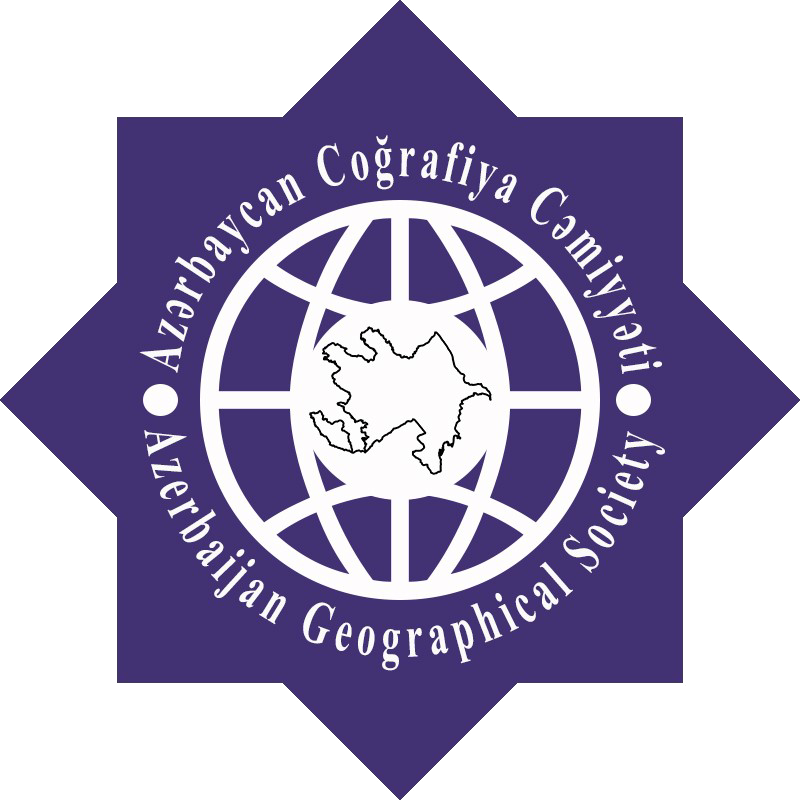ECOLOGICAL CONSEQUENCES OF THE TRANSFORMATION OF THE GANIKH-AYRICHAY VALLEY AND ADJACENT LOW MOUNTAIN LANDSCAPES
R.A.Aliyeva
Baku State University
AZ 1148, Academic Zahid Khalilov street, 23, Baku city,
Abstract
This article discusses the fact that the natural landscapes of the Ganikh-Ayrichay valley and adjacent low mountains have undergone significant environmental changes as a result of centuries of anthropogenic transformation, as well as the ecological consequences of landscape transformation. Studies have shown that landscape transformation plays an important role in the intensification of floods, landslides, and other negative degradation processes. The rapid growth of settlements in the region over the past century has increased the anthropogenic load on natural complexes, upset the ecological balance of landscapes, and accelerated the process of degradation. Various degradation processes caused by anthropogenic transformation constantly disrupt the balanced development of landscapes in accordance with an increase in anthropogenic loads, creating negative modifications of various reproducible origins in them. Correct management and regulartion of ecological processes in various natural areas of the region make it possible to determine the scientific basis for the balanced development of landscapes. The use of space methods in the study of modern landscapes is of great importance. In this regard, the research used satellite data from the US Geological Survey (www/usgs/explorer), space images from different years, obtained through Google Earth and Sasplanet software developed by the Russian Federation. On the basis of GIS and decoding of space images, a modern landscape map of the Ganikh-Ayrichay valley and adjacent mountain areas has been compiled.
REFERENCES
- Aliyeva R.A. “Ecological diagnostic assessment of Ganikh-Ayrichay valley and surrounding mountainous landscapes of Republic of Azerbaijan”, “Russian Scientific Journal Vestnik”, № 4 (56) St. Petersburg, October-December 2020, p. 45-49.
- Budagov B.A., Mikailov A.A. Development and formation of landscapes of the Southeast Caucasus in connection with the latest tectonics. Baku, Elm, 1985, 176 p.
- Garibov Y.A. Anthropogenic transformation of the landscapes of the Republic of Azerbaijan. Baku, Nafta-Press, 2011, 300 p.
- Garibov Y.A. Optimization of natural landscapes of the Republic of Azerbaijan. Baku, “AzTU”, 2012, 215 p.
- Khalilov Kh.A. Geomorphology and environment. Baku, Europe, 2020, 487 p.
- Kuchinskaya I. Ya. Landscape-ecological differentiation of mountain geosystems. Baku, Victory, 2011, 195 p.
- Mammadov Q.Y., Khalilov M.Y. Forests of Azerbaijan, Baku, 1985, 400 p.
- Mardanov I.E., Mikailov A.A., Alizade E.K., Tarihazer S.A. Mofostructural conditioning of exodynamic processes on the example of the Azerbaijani part of the Great Caucasus, “Izvestiya AN Azerbaijan”, a series of earth sciences, Baku, 1996-1997, № 1-6, p. 24-30.
- Mikailov A.A., Garibov Y.A. Some issues of typification of mountain landscapes of the Azerbaijan SSR, on the stability of anthropogenic factors. Izvestiya AN Azerb. SSR, series of earth sciences, 1987, № 5. p. 16-21.
- Musayibov M.A. Landscapes of the Republic of Azerbaijan. BSU, 2011, 138 p.
- Socio-economic development of the regions (2014-2018). State Statistics Committee of the Republic of Azerbaijan, January, Baku 2018, 590 p.
- Statistical indicators of Azerbaijan 2000-2020, ARDSK, Baku, 2020, 217 p.
- Suleymanov M.A. Conformity of natural anthropogenic landscapes of Azerbaijan to the geographical law. Baku, 2005, 248 p.
- Yunusov M.I., Ismayilov M.C. Mammadbeyov E.Sh. Materials of the VII Congress of the Azerbaijan Geographical Society on landscape decoding of agro-irrigation complexes of the Kur-Araz lowland. Baku, 1998, p. 33-35.
Publication Date: December 15, 2021
Download the article
